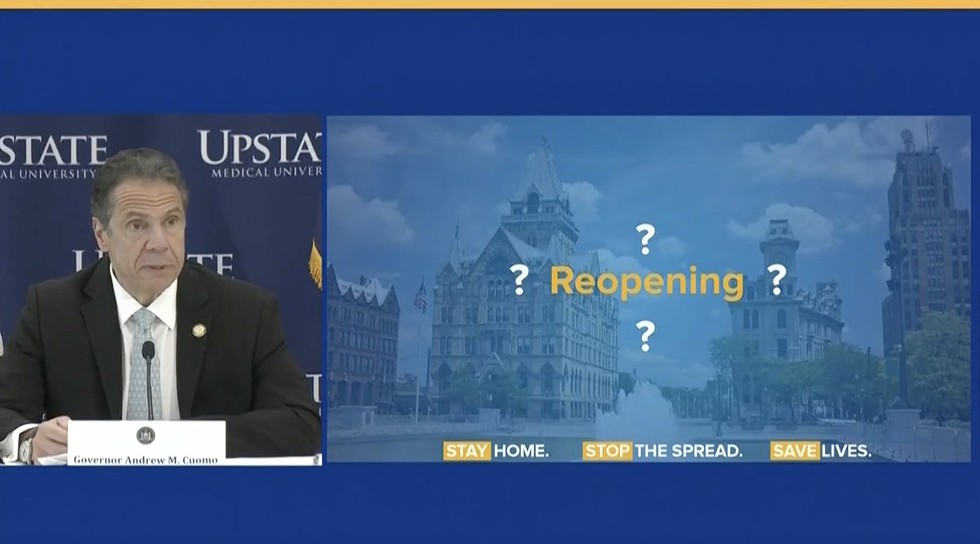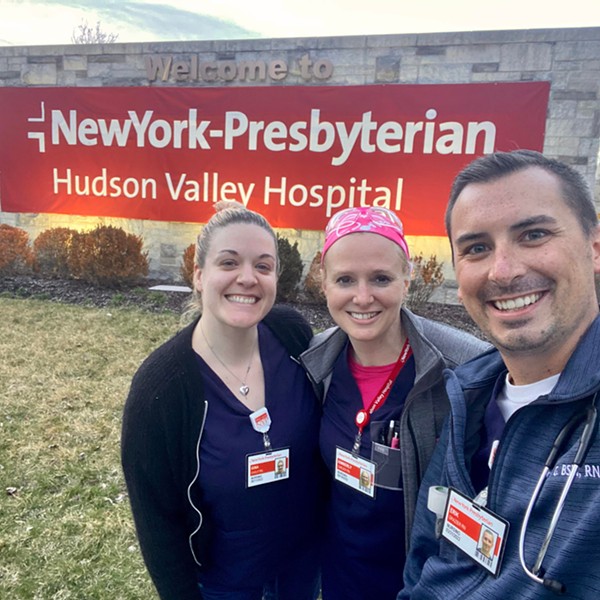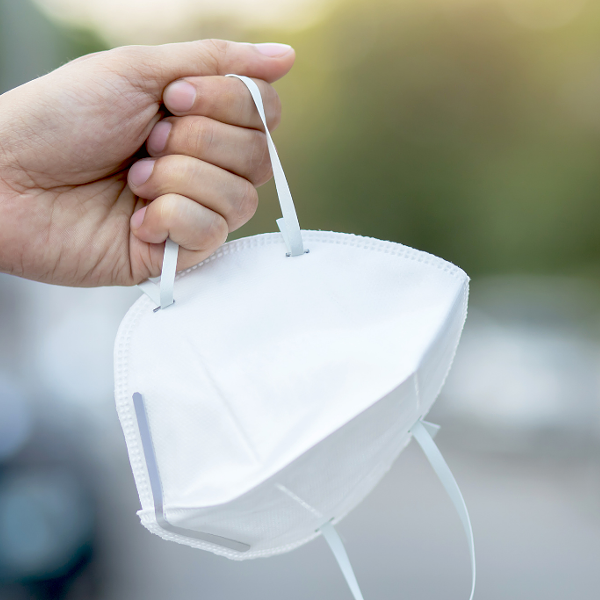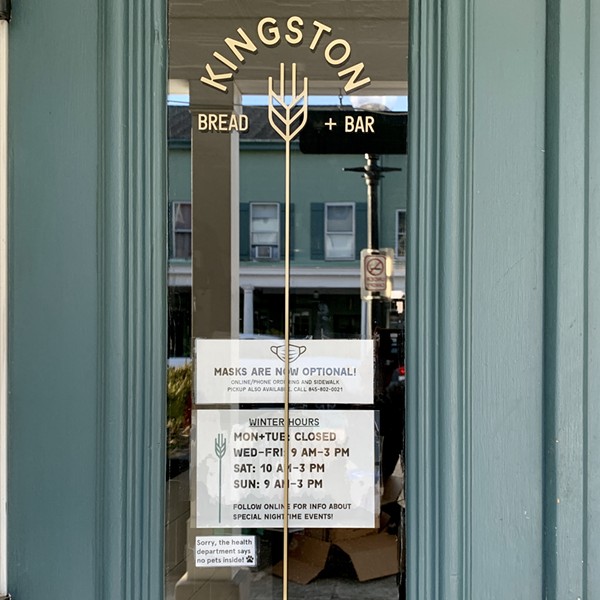This is a roundup of coronavirus news and announcements from New York State and Hudson Valley and Catskills counties published on Thursday, May 14. Produced in collaboration with The Other Hudson Valley.
Note: We are now grouping local updates by region and tracking active cases in every county that provides numbers. A couple of times per week, we’ll also dive deeper into an issue in the news, with the goal of shedding light on how the region is handling the next phase of the pandemic. The first in this series, which we’re calling Local Dive, is below.
LOCAL DIVE
The phrase “economic leadership” doesn’t often appear in the company of “rural upstate New York.” But pandemic is changing a lot of things.
In the Hudson Valley and Catskills, the two smallest and most rural counties will be the first to reopen: Delaware and Schoharie.
Within their respective state economic development regions—the Southern Tier for Delaware County, and the Mohawk Valley for Schoharie—the two little Catskills counties aren’t the focus of much state economic planning. When people talk about the Southern Tier economy, they typically mean Binghamton, a university city of 45,000, or maybe Corning, home to a Fortune 500 manufacturer. The Mohawk Valley is dominated by Utica and Schenectady, each a revitalizing Rust Belt city with a population more than twice as large as Schoharie County.
But to their bordering neighbors in the still-shuttered Mid-Hudson and Capital regions, these two tiny rural counties are, for once, leading the vanguard of the local economy.
A Scramble to Prepare
Since Monday, when Cuomo announced that the Southern Tier, Mohawk Valley, and Finger Lakes regions were ready to begin Phase One of reopening on May 15, business leaders and local officials have been scrambling behind the scenes to prepare.
As of Wednesday, they hadn’t received much guidance from New York State. Glenn Nealis, chair of the Delaware County Industrial Development Agency (IDA), has been fielding calls from frantic business owners all over the county who want to know what reopening means for them. Reached by phone Wednesday, Nealis said there were still “more questions than answers” about reopening. The IDA, working together with the county Chamber of Commerce and the nonprofit MARK Project, has spent the past few days furiously trying to find answers and steer businesses amid the chaos.
Everyone has questions. “What do we do? Can we open? How do we open? What do we have to do to open?” Nealis says. “And then there’s the question: Glenn, How am I going to make it through this shutdown? Those are the most painful ones.”
Individual business plans for worker and customer safety, which Cuomo has said will be required of all businesses seeking to reopen in Phase One, have been a key area of uncertainty.
“Is it a plan you submit, or one you have on hand? We don’t know. If it’s something you submit, to whom do you submit it? Do they have to review it and approve it? We don’t know,” Nealis said. “What information is supposed to be in a plan? We don’t know. Who, if anybody, enforces the plan? We don’t know.” There has also been confusion as to whether essential businesses, which have been operating all along, must now fill out a plan.
By Thursday afternoon, with just hours to go before NY on PAUSE was set to expire, some of those answers had become clear. According to fast-evolving guidance on the NY Forward website, businesses reopening under Phase One do not have to submit a plan to state or local officials—or to anyone. The state has created a template form for business safety plans, which both reopening and essential business owners are expected to fill out and keep on the premises, and which “must made available [sic] to the New York State Department of Health (DOH) or local health or safety authorities in the event of an inspection.” There is also a link and a phone number on the site for individuals to file a complaint about a business not following safety guidelines.
Whether any inspections will actually be conducted, or which state or local authorities have the authority to bring enforcement action against a business that fails to comply with Phase One safety guidelines, remains unclear. Confusion about whether local law enforcement has the authority to enforce state executive orders has been an issue since the March declaration of statewide emergency.
“What I’m told is right now, it’s a state jurisdictional issue, so who has those powers? I don’t know if it’s anybody beyond the state police,” Nealis says. “You get 10 lawyers in the room, you get 10 different answers. Until the courts open up and until a complaint moves through that process, I don’t think we’ll fully know.”
More than 1,600 businesses have already received cease-and-desist orders from the state Attorney General for price gouging, labor issues, or other pandemic-related complaints, according to a story in Thursday’s Times Union. Whether businesses have complied with those orders, or whether any will result in court action, is still unknown.
Who’s Opening for Business?
Phase One of reopening allows businesses in a few sectors to reopen with safety plans: construction, agriculture, forestry, hunting and fishing, manufacturing, wholesale trade, and retail limited to delivery, curbside, or in-store pickup and dropoff.
In a radio appearance on a WIOX talk show on Wednesday, Schoharie County Board of Supervisors chair Bill Federice said that although the county is rural, there are more pockets of manufacturing than one might expect. A company in Howes Cave, Kintz Plastics, has been operating under a waiver as an essential business because they produce key components for testing kits, Federice said.
For businesses that don’t fit neatly into the definitions of Phase One allowed activities, there is likely to be confusion about whether reopening is allowed. Already, Empire State Development’s guidance on what constitutes an essential business has spawned confusion and controversy.
“I’m not criticizing anybody, these are unprecedented times, but I do not think that the guidance that was provided in terms of who was an essential business or not was clear,” Nealis says. “To a large extent, that was left to businesses to self-determine.”
The next three phases in the state’s four-step reopening plan are broadly defined, but there are a lot of businesses that have not yet been sorted into a phase. When can libraries reopen? Barbershops and hair salons? So far, the state hasn’t said.
Federice is cautiously looking forward to the beginning of reopening. “We’re excited, we know we can’t shut down and hunker down for the next year,” he says. But he has reservations.
“We can pull back if we have to,” he says. “What scares me a little bit is, we have a 12 percent hit rate on antibodies. That tells me 88 percent haven’t been exposed to it yet. We’re still very vulnerable.”
Federice, a Republican, serves as the supervisor of Conesville, a town of just over 700 people that has not yet had a confirmed COVID-19 case. He credits masks, social distancing, and outreach by the Schoharie County Department of Health for his county’s low rate of infection.
What’s In Store for the Hudson Valley?
The mid-Hudson region (Westchester, Rockland, Putnam, Orange, Ulster, Dutchess, and Sullivan counties) has not reached two of the required metrics to begin Phase One of reopening. Its rate of new hospitalizations was 2.38 per 100,000—the bar is two per 100,000—and hospitalizations had only been declining for four days, not the requisite 14.
This may have ruffled some feathers. Westchester County executive George Latimer said Monday the region would be set to reopen by the beginning of next week at the latest. Dutchess County executive Marc Molinaro made similar predictions early in May. Molinaro told the Poughkeepsie Journal that the Mid-Hudson Region should be able to reopen without a two-week decline in hospital deaths, arguing that Dutchess County was far below its hospital bed capacity and could handle the pandemic well with its existing resources. A state spokesman replied curtly, saying if Molinaro did not agree with President Trump and Governor Cuomo, “I don’t know what to tell you.”
There has also been disagreements with the governor lumping Westchester and Rockland counties in with the other five counties in the region. The leaders of the northern five counties, as well as the leaders of Columbia and Greene counties, met Monday to try to plan for the reopening. They formed the “Hudson Valley Re-Opening Workgroup”; Westchester and Rockland were evidently not invited to the party.
Molinaro argued that Westchester and Rockland should not be part of the group because they were affected more by the coronavirus, and their stats would bring the rest of the region’s metrics down. But this is debatable. Because the coronavirus hit Westchester before the rest of the Hudson Valley, it has been in decline there longer. Neither the state nor Westchester County consistently release the number of new hospitalizations, but, at this point, Westchester’s active case rate is actually below Dutchess, Ulster, and Sullivan counties and has been declining for more than three weeks.
NEW YORK STATE
343,051 cases confirmed (2,390 new)
1,298,757 tests performed (39,850 new)
22,170 deaths (157 new)
74,433 hospitalizations (overall)
6,706 hospitalizations (current)
2,223 ICU admissions
Confirmed cases per 10,000 residents: 176
New York State coronavirus page
New York State official pressroom
Hotline: (888) 364-3065
In late March, aides to Governor Andrew Cuomo quietly inserted a provision on page 347 of New York’s final budget bill which shields nursing homes from lawsuits over failing to protect residents from death or sickness caused by the coronavirus. Industry representatives lobbied for the provision. Now more than 5,300 residents of nursing homes in New York are believed to have died from the outbreak, and their families are finding they may not be able to pursue legal action against the facilities. “They can’t just shrug their shoulders and say, ‘It’s a pandemic,’” said Vivian Rivera-Zayas, who plans to sue a Long Island nursing home in which her mother died. “There has to be accountability.” Rivera-Zayas told The New York Times that a Long Island nursing home waited until her mother, who had tested positive for COVID-19, was gasping for breath with a collapsed lung before transferring her to a hospital next door. She died two days later.
Announced by New York State on Thursday:
- Central New York has hit the benchmarks for hospitalizations, deaths, testing, and contact tracing for moving to Phase One of reopening on Friday, May 15, joining the North Country, Southern Tier, Mohawk Valley, and Finger Lakes regions. Still not cleared for reopening: Mid-Hudson, Capital Region, Western New York, Long Island, and New York City. The state’s regional dashboard is tracking progress (and regress) daily on seven metrics that regions need to meet before moving to Phase One.
- The state is giving out $3 million in grants to businesses to manufacture emergency medical supplies and equipment. Interested businesses should visit www.esd.ny.gov.
- President Donald Trump has expedited $3.9 billion in funding to the MTA, Cuomo said in Thursday’s briefing. “The President cut red tape and actually sent the first installment today, so I’m grateful for that and I thank him,” Cuomo said.
- New York State has issued diagnostic criteria and an official name for a rare inflammatory syndrome linked to COVID-19 in children, which has sickened more than 100 children and claimed the lives of three. The state Department of Health is calling it “pediatric multi-system inflammatory syndrome,” or PMIS, and has posted the criteria defining the syndrome on their website for healthcare providers.
LOWER HUDSON VALLEY
County coronavirus pages: Rockland, Westchester, Putnam
Despite several meetings and thousands of petition signatures, Westchester Medical Center administrators have not provided frontline staff with any form of hazard pay, according to a statement from United Healthcare Workers East. On Thursday, silent vigils were held at several Westchester Medical Center Health Network hospitals in Rockland, Ulster, Dutchess, and Westchester counties, to protest the absence of hazard pay for those frontline workers.
Rockland County executive Ed Day said he expects Rockland County to begin reopening some businesses in about a week, but that it will take longer to convince some people to leave their homes after portions of the state-imposed shutdown are lifted.
MID-HUDSON VALLEY
County coronavirus pages: Orange, Dutchess, Ulster, Columbia
Dutchess County executive Marc Molinaro said the Mid-Hudson Region should be able to reopen without a two-week decline in hospital deaths. The decline is one of the seven metrics needed to reopen, and hospital deaths have declined for only four days in the seven-county Mid-Hudson Region. Molinaro argued that Dutchess County was far below its hospital bed capacity and could handle the pandemic well with its existing resources, which he asserted was what the state was trying to ascertain with the seven metrics. The region has also not reached a second benchmark: getting new hospitalizations under two per 100,000 residents.
Two Ulster County legislators questioned whether the county should be paying to print 100,000 copies of the annual county tourism guide in the midst of the pandemic. “I think we’re being a little tone deaf talking about a tourism guide, as if everything is going on as normal,” legislator Tracey Bartlett of Gardiner said, adding she felt it went against state guidance to encourage people from other states to visit. Legislator Mary Beth Maio of Lloyd said the county should not be spending money when it anticipated a massive budget shortfall. The county spent less of its reserve funds last year than anticipated, and has a $36 million fund balance going into 2020, but county comptroller March Gallager said Wednesday the whole balance could be burned through by the end of the year to cover revenue shortfalls from the COVID-19 shutdown. “Who's looking at travel guides now anyway?” Maio added. The county’s tourism director said it was some local businesses’ only form of advertising. A county subcommittee voted Thursday to move the contract for the prints to the full Ulster County Legislature, which will vote on it Tuesday.
The Kingston Common Council is considering eliminating unfilled positions in the city as the city comptroller said Kingston would lose more money from the shutdowns than was anticipated two weeks ago. The vacant positions include two police officers and a full-time clerk. Mayor Steve Noble said the latest sales tax receipts were down 38 percent from this time last year. City comptroller John Tuey estimated Kingston would lose between $3.95 million to $6.47 million in revenues this year.
CATSKILLS
County coronavirus pages: Sullivan, Delaware, Greene, Schoharie
In a Facebook comment on an update on case numbers on Thursday, the Schoharie County Department of Health indicated that it would not count a death of a COVID-19-positive resident as a pandemic fatality because the person had “significant underlying health issues that were most likely the cause of death.” The state now counts two deaths for Schoharie County, but county health officials maintain that only one should be counted.
In Sullivan County, 32 percent of the confirmed COVID-19 cases have been in the local Latino community, which accounts for just over 16 percent of the county’s population, the Sullivan County Democrat reports. Juanita Sarmiento of the Rural and Migrant Ministry has been visiting employers to hand out masks and information in Spanish. “From what we’ve seen, it looks like our community is being hit the hardest. The reason being all of the factories here hire all of these immigrant workers,” she told the paper. Several local nonprofits are working with the county’s Public Health department and state senator Jen Metzger to get resources and information out to Spanish-speaking and immigrant communities.
OF INTEREST?
The River has a guide on where, how, and when to get tested for the coronavirus in the Hudson Valley and Catskills. We also have a regularly updated list of resources on our website. To read more of our daily news roundups, visit our coronavirus page.
The River is collaborating with WGXC to announce these updates over the air. To listen, tune in to 90.7 FM at midnight, 5am, 7am, or 9am, or visit the audio archive online.
La Voz, una revista de cultura y noticias del Valle de Hudson en español, está traduciendo estos resúmenes y co-publicandolos en su página web. Leyendo aqui. También puede escuchar actualizaciones diarias por audio en el show “La Voz con Mariel Fiori” en Radio Kingston.



















